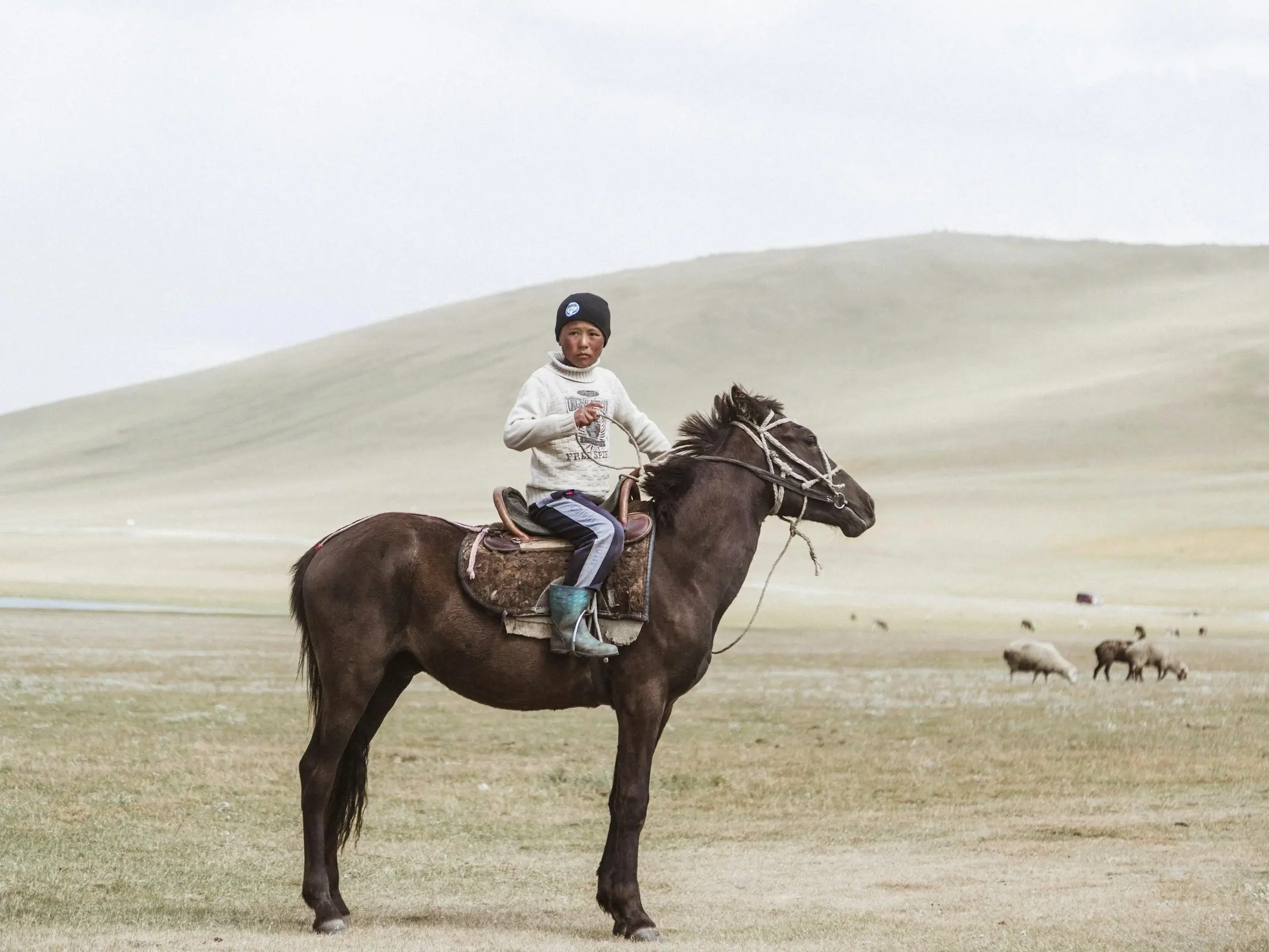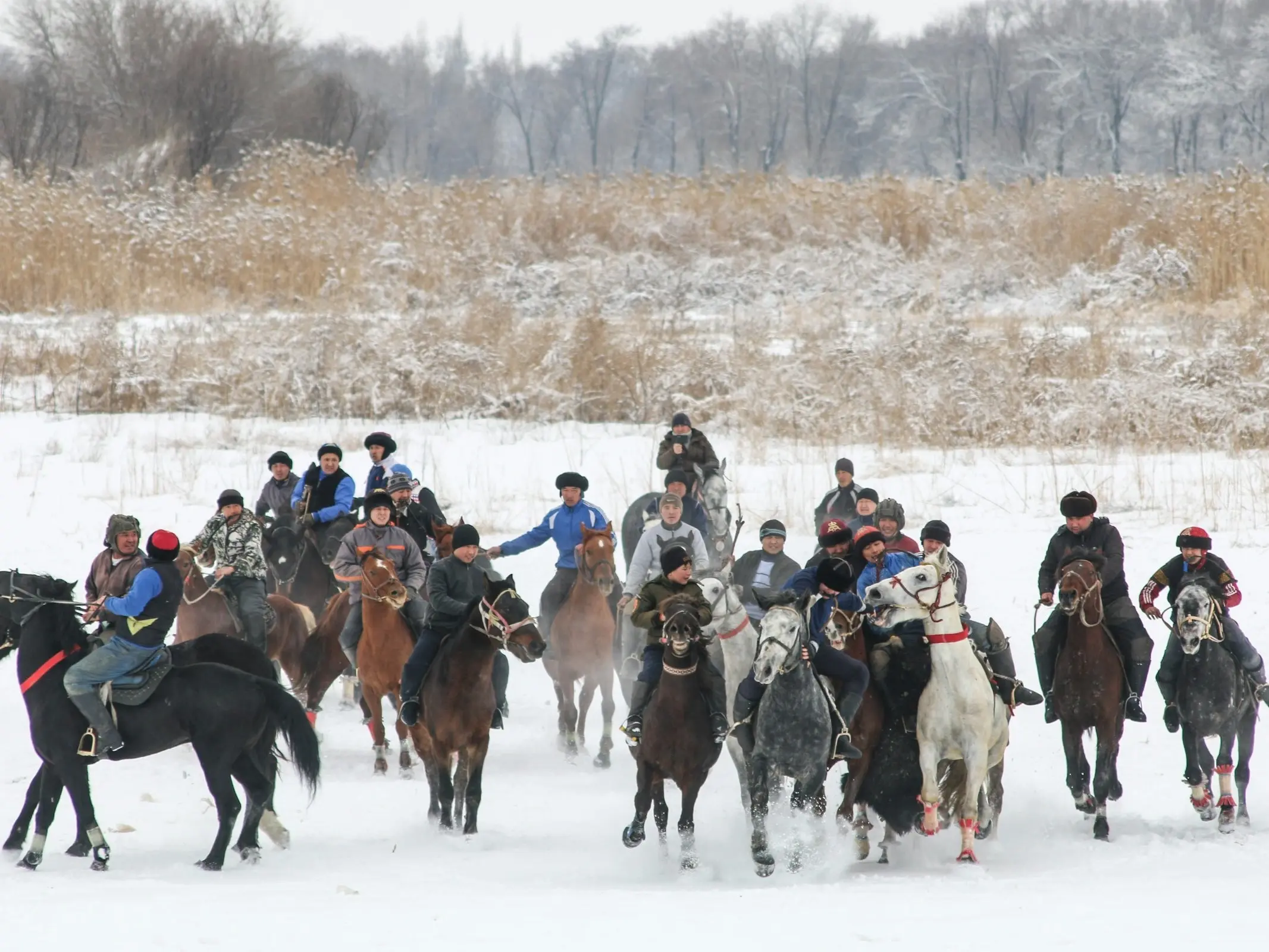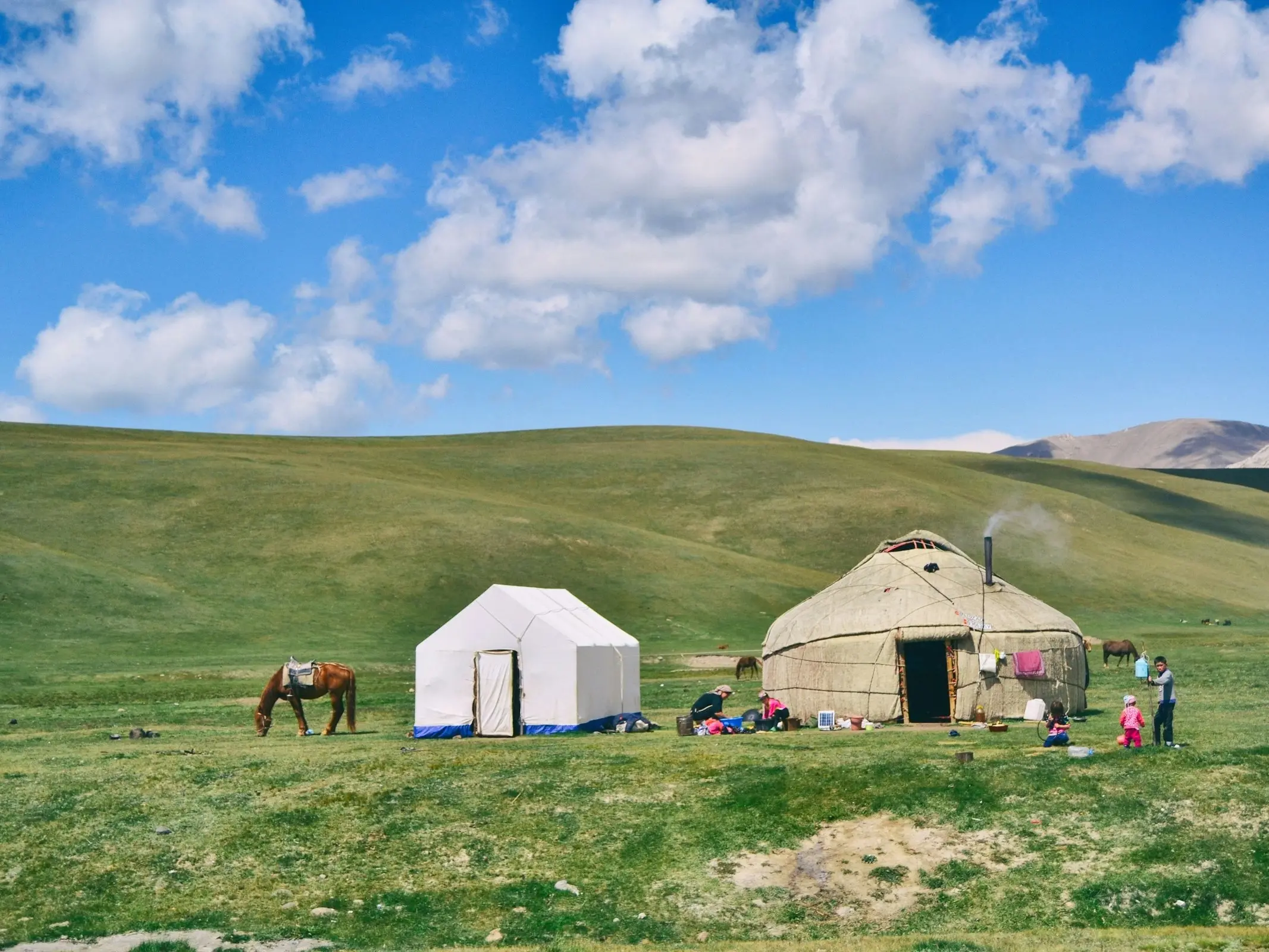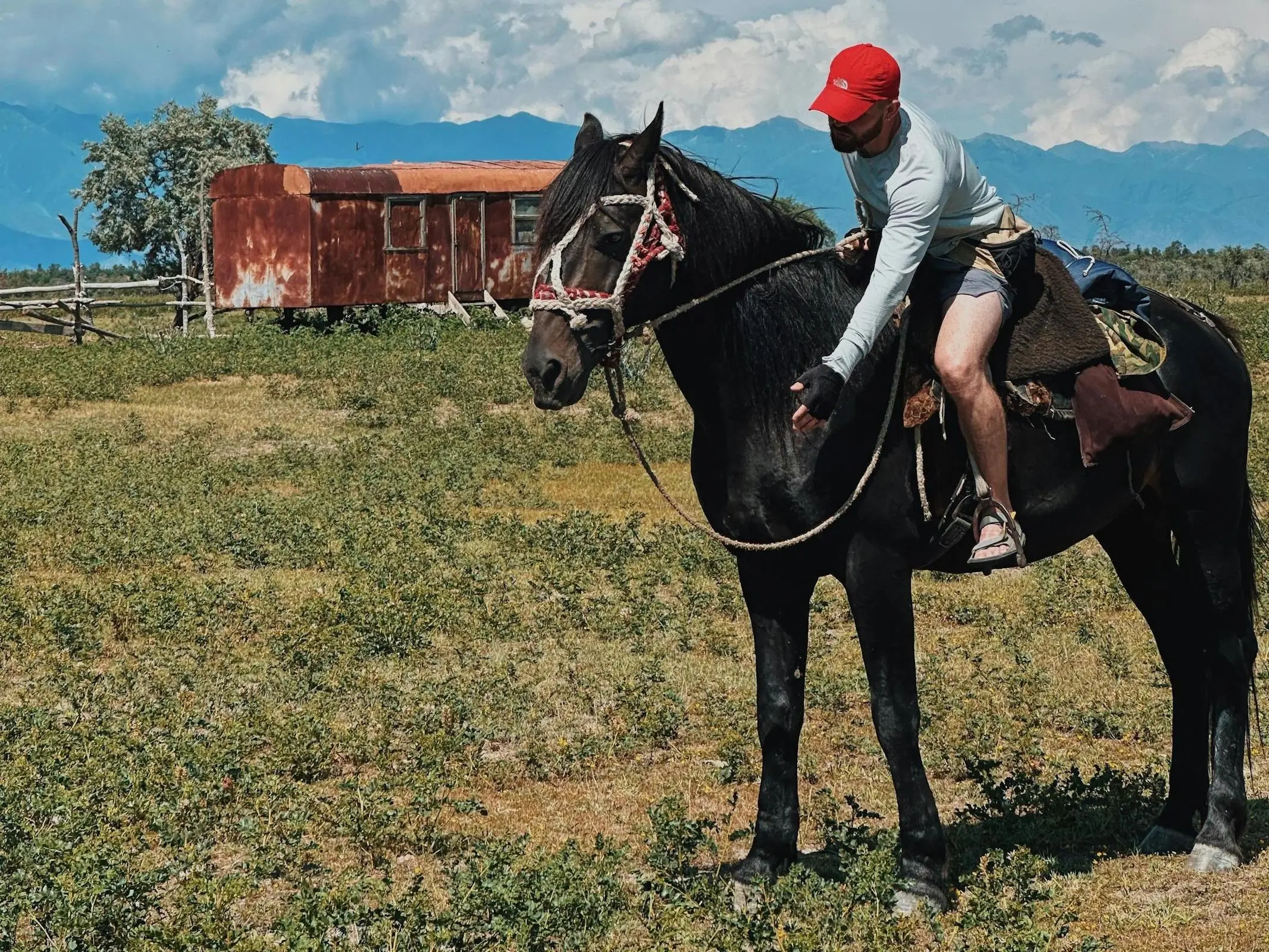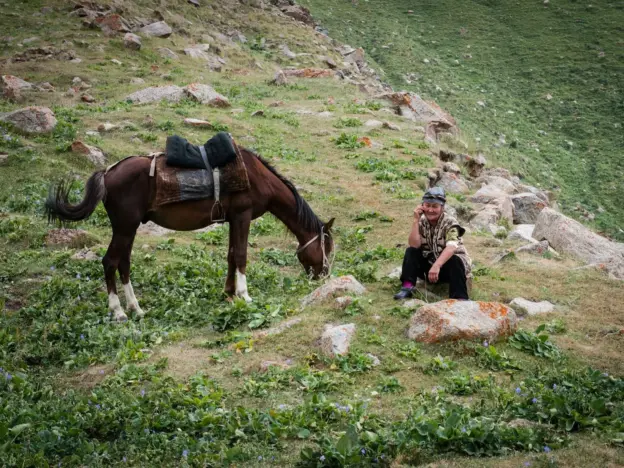Intro
Also called Novokirgizskaya and Novokirghiz, the New Kirgiz Horse was developed using the old Kirgiz breed and was developed around 1930 in Kyrgyzstan.
Origins
The original breed was native to the mountainous regions of Kirgizia & Kazakhstan, came from Mongolian stock and was used by local tribes for centuries. Early in the 20th century a need for larger animals grew for larger scale agriculture and the Kirgiz horses were crossed with English Thoroughbred and Don horses. The resulting animals formed the foundation for the New Kirgiz breed.
The state controlled the breeding and by the middle of the 20th century it’s numbers were flourishing. Three different types were recognized, basic, massive and saddle.
Massive – The largest and best of the types, they are well suited for highland conditions, used primarily for meat and milk production
Saddle – Not as well suited to local conditions and not as popular, used mostly for milk production
Basic – A combination of the two types above and often found with conformation faults due to poor breeding
Features
Average height 14.2 – 15.2 hands
Physique
Head is medium in size and clean cut
Neck is low
Back is straight
Legs are clean
Traditional Colors
All colors
Temperament
Lively and intelligent
Use
Milk production
Meat production
Riding horse
Harness horse
Pack animal
More Images
